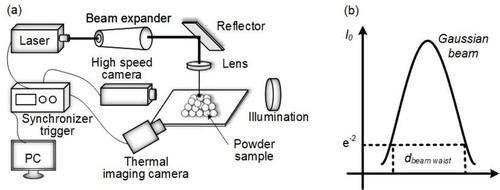当前位置:
X-MOL 学术
›
Propellants Explos. Pyrotech.
›
论文详情
Our official English website, www.x-mol.net, welcomes your feedback! (Note: you will need to create a separate account there.)
Effect of Heating Rate on Ignition Characteristics of Newly Prepared and Aged Aluminum Nanoparticles
Propellants, Explosives, Pyrotechnics ( IF 1.8 ) Pub Date : 2020-06-23 , DOI: 10.1002/prep.202000035 Xiao Jin 1 , Shengji Li 2 , Yihang Yang 1 , Yanjing Yang 3 , Xuefeng Huang 1
Propellants, Explosives, Pyrotechnics ( IF 1.8 ) Pub Date : 2020-06-23 , DOI: 10.1002/prep.202000035 Xiao Jin 1 , Shengji Li 2 , Yihang Yang 1 , Yanjing Yang 3 , Xuefeng Huang 1
Affiliation

|
Aluminum (Al) nanoparticles have been widely applied in propellants, but the ageing of Al nanoparticles will result in the degradation of propellant ignition performance. This paper experimentally investigates the ignition characteristics of newly prepared and aged Al nanoparticles, and improves the ignition performance of aged Al nanoparticles through elevating the heating rate. It was observed that, despite newly prepared or aged Al nanoparticles, their ignition included three stages: stage I – heating, stage II – melting, and stage III – evaporation. The temperature rise and time in stage I, melting temperature, and time in stage II and ignition temperature in stage III were separately discussed. It is found that the duration of each stage during the ignition of aged Al nanoparticles was much longer than that of newly prepared Al nanoparticles, testifying that ignition temperature of Al nanoparticles increased and ignition delay time elongated due to ageing. At elevated power density, the heating rate of Al nanoparticles increased, the heating, melting, and evaporating time shortened. The difference of ignition delay time between newly prepared and aged Al nanoparticles was significantly reduced. It means that the ignition performance can be improved through increasing the heating rate. Simultaneously, the energy conversation equation of each stage was built and discussed. It will be beneficial to deeply understand the ignition process and reveal the ignition mechanism of aged Al nanoparticles.
中文翻译:

升温速率对新制备和老化的铝纳米粒子点火特性的影响
铝(Al)纳米颗粒已广泛应用于推进剂中,但是Al纳米颗粒的老化会导致推进剂点火性能下降。本文通过实验研究了新制备和老化的Al纳米粒子的着火特性,并通过提高加热速率来提高老化的Al纳米粒子的着火性能。观察到,尽管新制备或老化了Al纳米粒子,但它们的着火包括三个阶段:第一阶段–加热;第二阶段–熔化;第三阶段–蒸发。分别讨论了第一阶段的温度上升和时间,第二阶段的熔化温度和时间以及第三阶段的点火温度。发现老化的Al纳米粒子着火期间每个阶段的持续时间比新制备的Al纳米粒子要长得多,证明由于老化,Al纳米颗粒的着火温度增加并且着火延迟时间延长。在提高的功率密度下,Al纳米颗粒的加热速率增加,加热,熔化和蒸发时间缩短。新制备的和老化的Al纳米颗粒之间的点火延迟时间差异显着减小。这意味着可以通过提高加热速率来改善点火性能。同时,建立并讨论了每个阶段的能量转换方程。深入了解点火过程,揭示时效的铝纳米粒子的点火机理将是有益的。缩短了加热,熔化和蒸发时间。新制备的和老化的Al纳米颗粒之间的点火延迟时间差异显着减小。这意味着可以通过提高加热速率来改善点火性能。同时,建立并讨论了每个阶段的能量转换方程。深入了解点火过程,揭示时效的铝纳米粒子的点火机理将是有益的。缩短了加热,熔化和蒸发时间。新制备的和老化的Al纳米颗粒之间的点火延迟时间差异显着减小。这意味着可以通过提高加热速率来改善点火性能。同时,建立并讨论了每个阶段的能量转换方程。深入了解点火过程,揭示时效的铝纳米粒子的点火机理将是有益的。
更新日期:2020-06-23
中文翻译:

升温速率对新制备和老化的铝纳米粒子点火特性的影响
铝(Al)纳米颗粒已广泛应用于推进剂中,但是Al纳米颗粒的老化会导致推进剂点火性能下降。本文通过实验研究了新制备和老化的Al纳米粒子的着火特性,并通过提高加热速率来提高老化的Al纳米粒子的着火性能。观察到,尽管新制备或老化了Al纳米粒子,但它们的着火包括三个阶段:第一阶段–加热;第二阶段–熔化;第三阶段–蒸发。分别讨论了第一阶段的温度上升和时间,第二阶段的熔化温度和时间以及第三阶段的点火温度。发现老化的Al纳米粒子着火期间每个阶段的持续时间比新制备的Al纳米粒子要长得多,证明由于老化,Al纳米颗粒的着火温度增加并且着火延迟时间延长。在提高的功率密度下,Al纳米颗粒的加热速率增加,加热,熔化和蒸发时间缩短。新制备的和老化的Al纳米颗粒之间的点火延迟时间差异显着减小。这意味着可以通过提高加热速率来改善点火性能。同时,建立并讨论了每个阶段的能量转换方程。深入了解点火过程,揭示时效的铝纳米粒子的点火机理将是有益的。缩短了加热,熔化和蒸发时间。新制备的和老化的Al纳米颗粒之间的点火延迟时间差异显着减小。这意味着可以通过提高加热速率来改善点火性能。同时,建立并讨论了每个阶段的能量转换方程。深入了解点火过程,揭示时效的铝纳米粒子的点火机理将是有益的。缩短了加热,熔化和蒸发时间。新制备的和老化的Al纳米颗粒之间的点火延迟时间差异显着减小。这意味着可以通过提高加热速率来改善点火性能。同时,建立并讨论了每个阶段的能量转换方程。深入了解点火过程,揭示时效的铝纳米粒子的点火机理将是有益的。



























 京公网安备 11010802027423号
京公网安备 11010802027423号